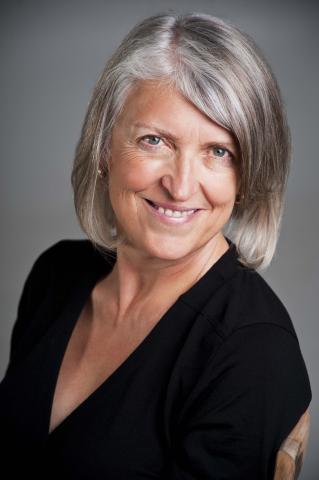Four years ago, Professor LeBaron noticed that the Government of Canada’s counter-terrorism strategy is built around the concept of resilience. She was intrigued that resilience was central to national security.
As the strategy defines it, resilience includes a strong emphasis on prevention and ensuring that communities are both strong and aware of people who feel excluded. Research shows that when individuals have a sense of belonging, they are less vulnerable to violent extremist rhetoric. The policy goal involves increasing social cohesion and deepening partnerships with communities to prevent violent escalation either within or outside Canada. In the event of a violent attack, this work would also contribute to the capacity of a community to come together again in the aftermath.
For Professor LeBaron, this approach raised important questions about how resilience is fostered in communities. Approaching the question from a wealth of experience in intercultural conflict resolution research and practice, Professor LeBaron knew that one important aspect of community resilience has to do with the arts. Yet arts practices may not otherwise register in discussions of national security, even though they are important vehicles for multiple voices and perspectives, and as mirrors of treasured stories and multiple aspects of identities. Together with colleagues Dr. Karen Bhangoo Randhawa of the University of California, Berkeley, Dr. Peter Reiner of the National Core for Neuroethics at the University of British Columbia and Professor Carrie MacLeod of the European Graduate School, she successfully obtained research funding from Public Safety Canada for a project on arts-related dialogue within the Punjabi diaspora in British Columbia.
“Not only do the arts bring people together, but people involved in the arts take license to express a range of views, including ideas that may be unpopular or outside of shared narratives. By revealing a wide spectrum of perspectives, artists often play a constructive and important role in drawing attention to things that are not immediately apparent or widely understood,” Professor LeBaron explains.
In the case of her work with Punjabi community members, Professor LeBaron’s arts-based approach has catalyzed conversations about belonging, community coherence, violence and racism – all factors in broader issues of inclusion and exclusion. Particularly important in this context are a spectrum of ideas about the twin ties of Punjabi people in British Columbia, to both their countries of origin and to their adopted homes. Sometimes, when tensions flare in the Punjab, a few people locally may advocate destructive tactics. Yet this advocacy is less persuasive to community members who experience robust inclusion in their adopted home.
To learn more about these phenomena, Professor LeBaron organized focus groups and individual key informant interviews, and used a variety of arts-based approaches along with dialogue. Working collaboratively with Punjabis, she encountered a very strong sense of identity, affiliation, language and culture, as well as a very clear connection with the Punjab and strong opposition to the policies of the Indian government which continue to be prejudicial towards Punjabi language and culture.
“I am deeply moved by the vitality and resilience I’ve witnessed in this project. Punjabi people in British Columbia are extremely entrepreneurial and important contributors to our social and political life, historically and in the present day. They have encountered destructive racism for over a hundred years, from the Komagata Maru incident forward – and they have shown tremendous strength,” Professor LeBaron asserts. “One of the participants was the target of a racist attack on campus that took place during our work together. This brought home to all of us the devastating effects racism continues to have, and how it undermines resilience.”
Concern about Canadian youths’ vulnerability to violent narratives is very relevant today. The arts not only improve experiences of social cohesion, they provide a forum in which people can explore a wide spectrum of views in a safe context, without which youth can feel marginalized and turn toward less peaceful means of expression or – in a few cases – join extremist groups. “Through the arts, there is an opportunity to test ideas and express emotions of frustration, fear and anger that might otherwise be pushed underground,” Professor LeBaron explains.
Professor LeBaron’s project is now in its third and final year. She and her project team hope that it will help create awareness around social exclusion and its relationship to resilience. To this end, they will be convening a roundtable for community, provincial and federal leaders to share project insights and make policy recommendations. Professor LeBaron, with her colleagues and the many community members who have participated in the project, seeks to foster hopeful social spaces, knowing that extremism flourishes amongst those who feel alienated and for whom belonging is elusive.
The Enacting Resilience Toolkit, pulling together many of the activities involved in the project within a resilience framework, is now available here.

PROFESSOR MICHELLE LEBARON
Michelle LeBaron joined the Allard School of Law as a full Professor in 2003, and was Director of the UBC Program on Dispute Resolution from 2003-2012. Professor LeBaron has lectured and consulted around the world on intercultural conflict resolution, and has practiced as a family law and commercial mediator. Her research focuses on how the arts can foster belonging and social cohesion across cultural and worldview differences. Professor LeBaron's latest book from the American Bar Association is titled The Choreography of Resolution: Conflict, Movement and Neuroscience. She has also published on creativity, intuition, spirituality and intercultural relations.


